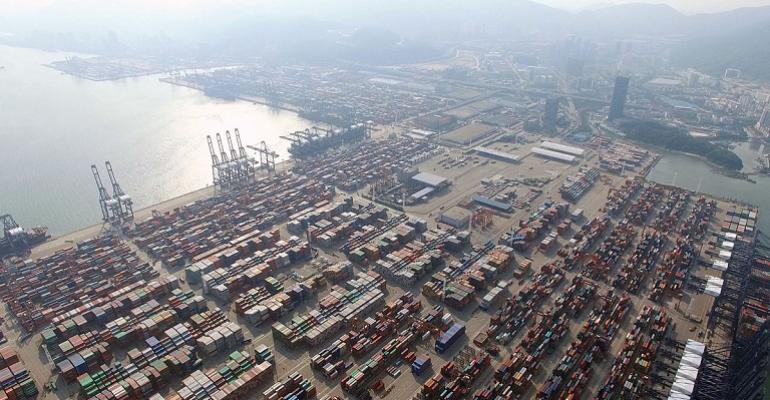Bimco Chief Shipping Analyst, Niels Rasmussen, said that early signs of weakness were apparent in container volumes, with headh-haul and regional volumes falling in the first quarter 2022, albeit remaining above Q1 2019 levels. Backhaul volumes meanwhile have fallen below Q1 2019 levels, according to the CTS index quoted.
Rasmussen listed further negative signs, including a 12.6% drop in the China Containerized Freight Index (CCFI) since early November 2021, slowing rates in the time charter market, slowing second-hand S+P activity and slowing newbuilding contracting.
On the demand side, Rasmussen noted a fall in the International Monetary Fund (IMF) global GDP growth forecast to 3.6% for 2022 and 3.6% for 2023, with an even lower outlook for the Euro-med region of 1.8% and 2.1% for 2022 and 2023, respectively.
The forecast is the result of compounding downside risks including supply chain disruptions, inflation, and potential impacts on commodity prices.
“Led by high levels of consumption in the US and a shift away from services towards goods, we estimate that global head-haul and regional container volumes in 2021 were 5m teu (3.6%) higher than GDP developments can explain. In order to predict container demand in 2022 and 2023, it is therefore just as important to estimate whether these consumption patterns will begin to normalise as it is to estimate the overall impact of GDP growth on demand,” said Rasmussen.
For the US, indications are that consumer spending is levelling off as inflation cuts discretionary spending, increased rates creep up, consumer confidence falls and Manufacturing Purchasing Managers' Indexes (PMIs) start to drop around the world.
“In the Europe & Mediterranean region, consumers in the EU have reported the second-lowest confidence level on record. As in the US, retail sales have remained remarkably steady from April 2021 to March 2022. It does, however, seem reasonable to expect that the low consumer confidence level will eventually hurt retail sales, especially if/when interest rates also increase,” said Rasmussen.
On the supply side, Rasmussen expects 3.0% fleet growth in 2022 and 7.7% in 2023, bringing the fleet to 27.4m teu as 2023 closes, albeit without factoring in demolition pressure from EEXI and CII, or any ETS introduction in the EU.
“We are, however, quite certain that these regulatory measures will impact average sailing speed and thereby effective capacity supply. On some ships, Engine Power Limitation (EPL) will be used to comply with EEXI, while owners and operators may also wish to cut operational speed to improve CII ratings and limit ETS cost exposure,” said Rasmussen.
Rasmussen published his thoughts ahead of a series of Bimco webinars on the bulk, tanker and container markets on June 8.
Copyright © 2024. All rights reserved. Seatrade, a trading name of Informa Markets (UK) Limited.
Add Seatrade Maritime News to your Google News feed.  |

